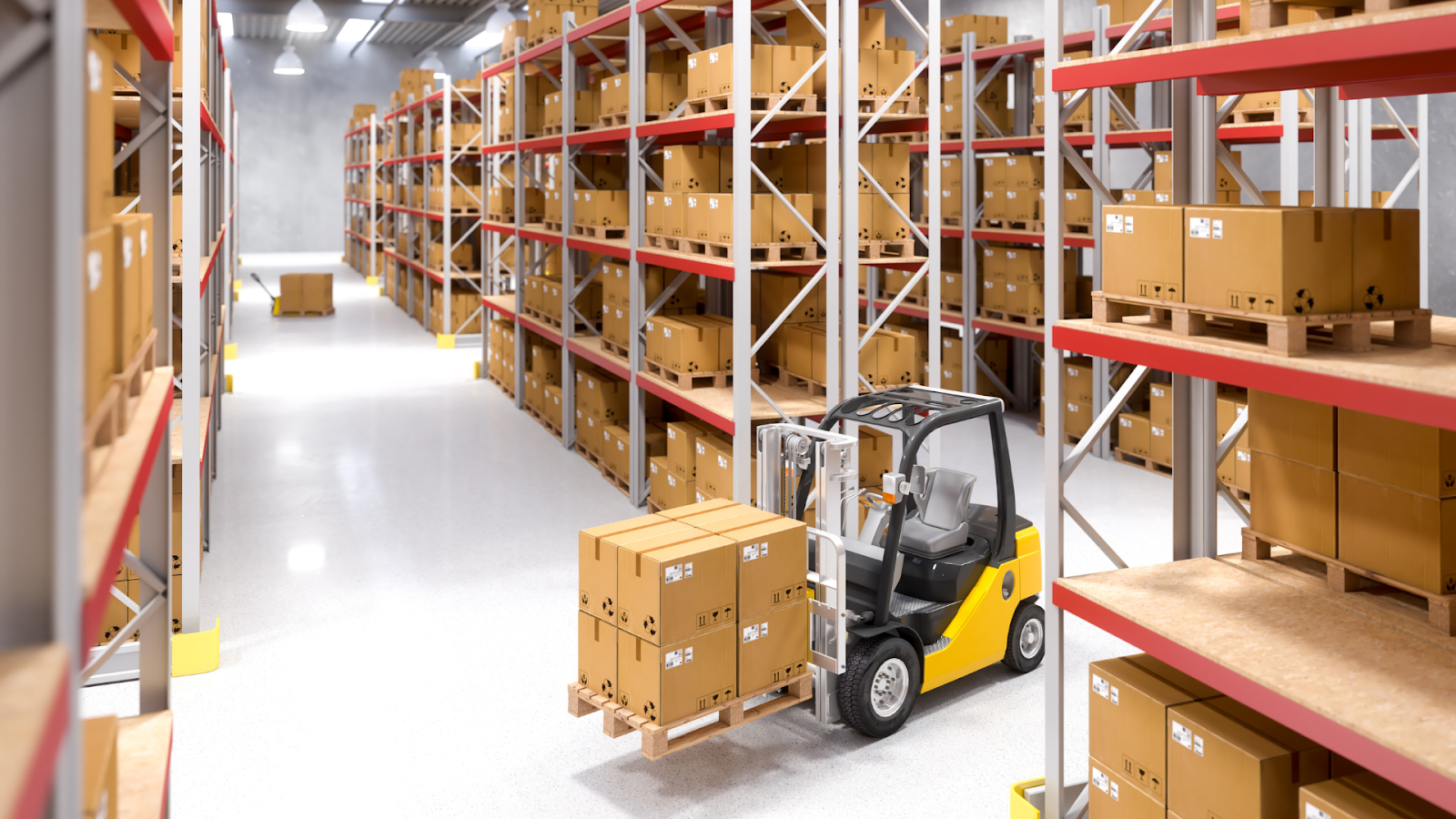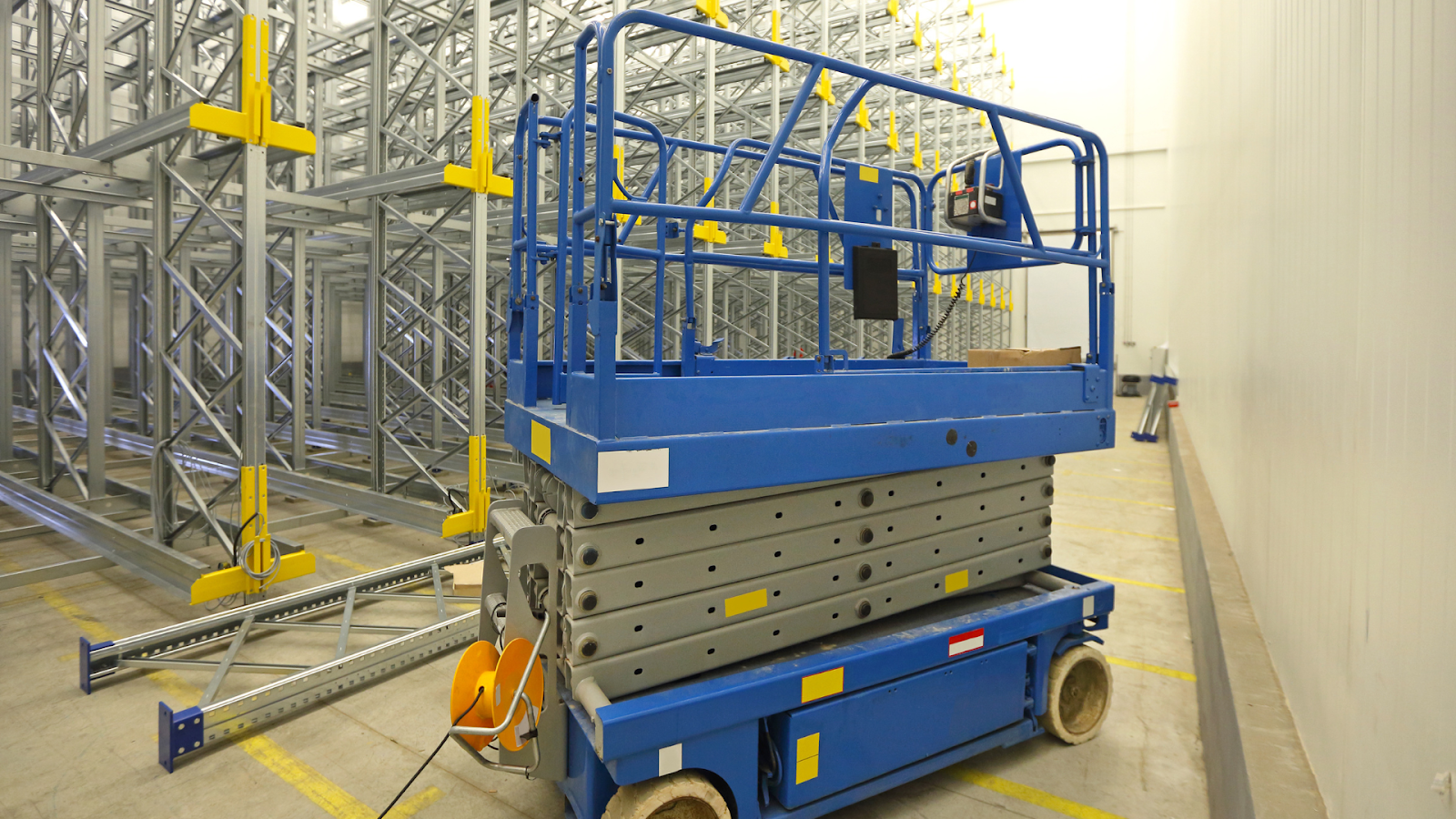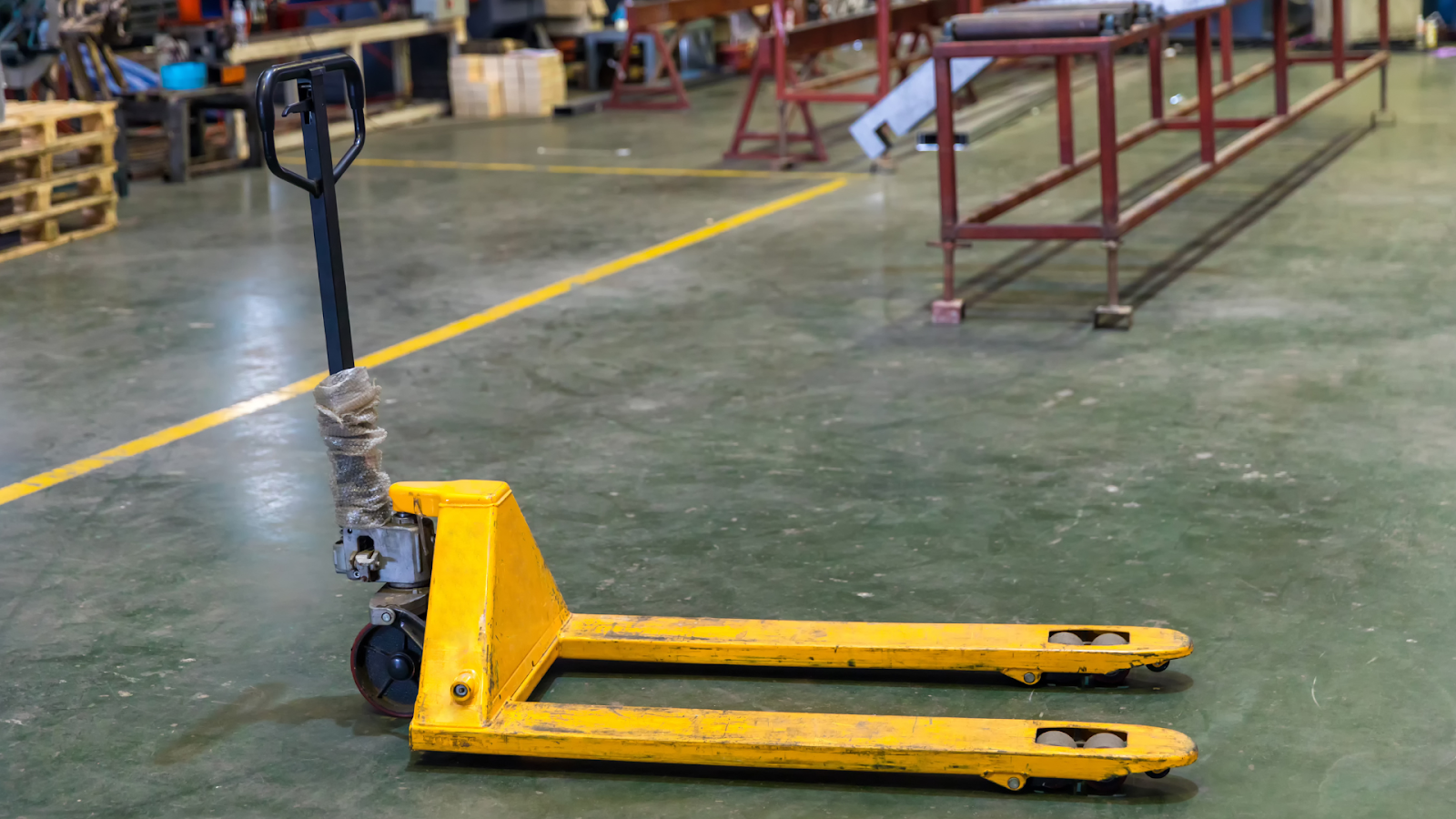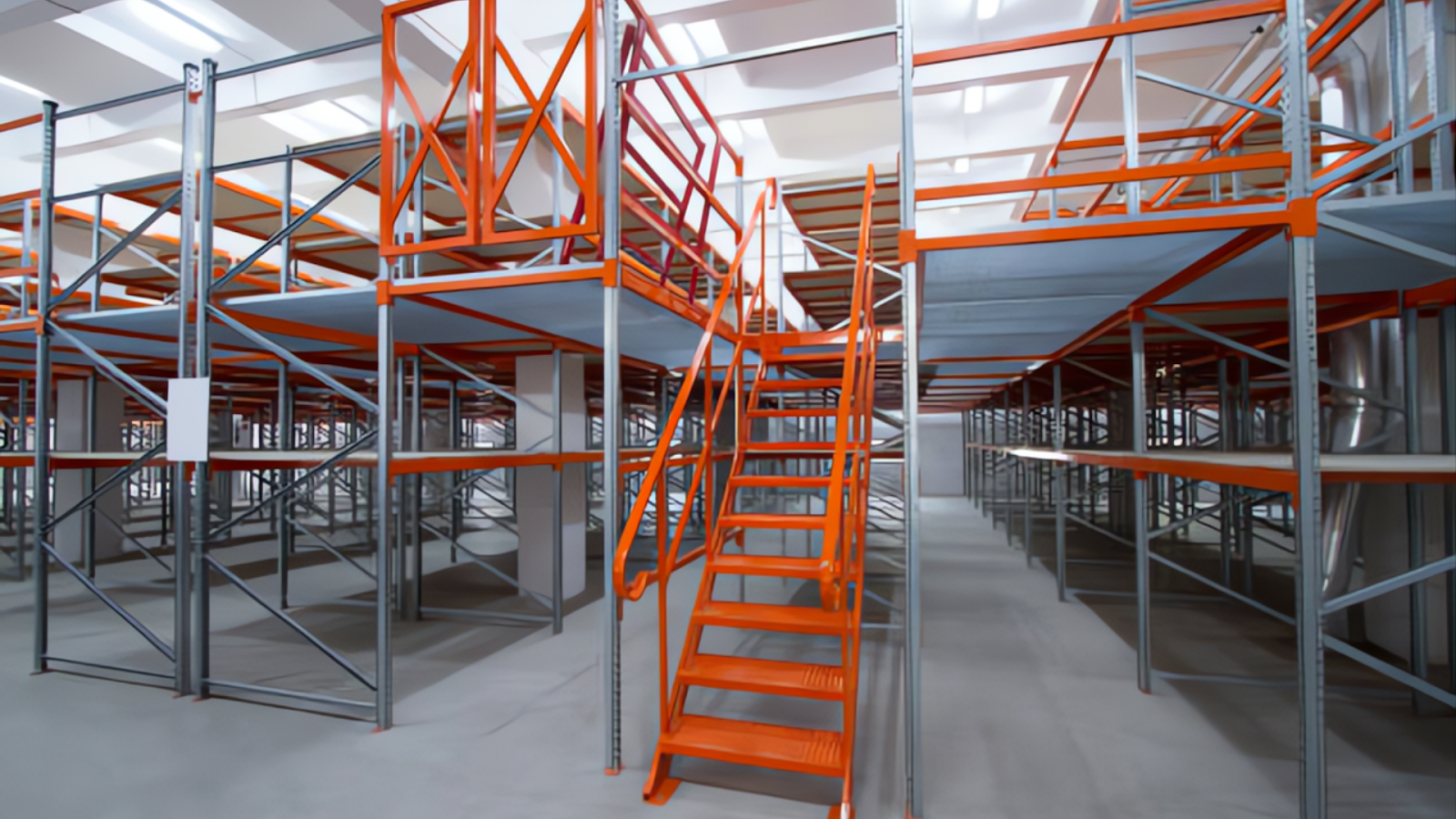North America dominated the pallet racking market with a market share of 37.04% in 2024, reflecting the region's intense focus on logistics optimization and warehouse efficiency. Your pallet racking system is the foundational framework that determines your warehouse's storage capacity, operational workflow, and overall productivity.
Inefficient storage costs you space, time, and money. If your warehouse struggles with low storage density, slow picking times, or difficulty accessing inventory, your pallet racking system is likely the root of the problem.
Selecting the right racking type directly resolves these issues by aligning your storage infrastructure with your specific operational needs. This guide provides a clear breakdown of pallet racking types, their applications, and specifications to help you identify the most effective solution for your facility.

A pallet racking system serves as the fundamental framework for organizing and storing palletized goods in your warehouse. Its primary function extends beyond simple storage to actively shaping your operational capabilities, directly influencing how you utilize space, manage inventory, and move materials.
The right system acts as a force multiplier, enabling you to meet demand fluctuations, maintain order, and support long-term growth without requiring additional square footage.
The core purposes of implementing a pallet racking system include:
Pallet racking systems allow you to utilize the full cubic volume of your facility. By storing inventory vertically rather than spreading it across the floor, you significantly increase storage density without expanding your building footprint. This approach is particularly valuable in regions with high real estate costs, as it maximizes your return on existing space.
Well-designed racking organizes inventory for optimal visibility and access. This organization supports first-in, first-out (FIFO) or last-in, first-out (LIFO) inventory management methods, reduces picking errors, and simplifies cycle counting. Quick, predictable access to materials minimizes search time and keeps your operations moving efficiently.
Properly engineered racking systems create defined aisles and organized storage zones that promote safer material handling. They provide clear paths for forklift traffic, reduce congestion, and help prevent accidents caused by disorganized storage or improperly stacked materials. The structural integrity of quality racking also protects both your inventory and your workforce.
Modular racking designs allow you to adapt to changing inventory profiles and business needs. You can reconfigure bays, adjust beam heights, and expand storage capacity as your requirements evolve. This flexibility prevents obsolescence and ensures your storage system remains aligned with your operational goals over time.
By providing secure, organized storage that prevents damage from improper stacking or handling, racking systems help maintain product quality. They keep materials off the floor, reduce compression damage, and ensure proper air circulation around stored goods, which is particularly important for climate-sensitive products.
With these core purposes in mind, you can now evaluate the specific types of systems designed to achieve them.
Understanding these principles is the first step. Implementing them effectively is the next step. Contact us to discuss how to apply these purposes to your specific facility's challenges.

Selecting the appropriate pallet racking system requires matching your specific operational requirements with the right storage technology. Each type offers distinct advantages in storage density, accessibility, and material handling efficiency.
Understanding these options ensures you implement a solution that supports your workflow rather than constrains it. The primary pallet racking configurations available include:
This is the most common and versatile system, providing direct access to every pallet position.
Operational Impact: Enables instant access to any pallet, which is crucial for same-day shipping and custom order assembly. Forklifts can retrieve items without moving other inventory, maintaining high-velocity workflow. If upright frames are damaged by impact, they must be unloaded and replaced immediately to prevent collapse.
Common Application: Distribution centers, retail backrooms, and manufacturing facilities with thousands of active SKUs.
This configuration places two racks back-to-back, effectively doubling storage density compared to selective racking. While it requires specialized reach trucks for operation, it reduces aisle space requirements by approximately 40% to 50%.
Note: The 40% to 50% is a standard industry benchmark based on a direct comparison of aisle count between selective and double deep configurations.
Selective Racking Layout: This configuration requires one access aisle for every single row of racking. The formula is essentially: Number of Aisles = Number of Rows + 1.
Double Deep Racking Layout: This configuration places two rows of racking back-to-back. The formula becomes: Number of Aisles = (Number of Rows / 2) + 1.
Imagine a warehouse bay long enough to hold 10 rows of racking.
With Selective Racking, you would need 11 aisles.
With Double Deep Racking, you would need 6 aisles (10 rows / 2 = 5, + 1 = 6).
The Reduction:
(11 - 6) / 11 * 100% = 45% reduction in aisle count.
Depending on the total number of rows in a specific layout, this percentage commonly fluctuates between 40 and 50%. Therefore, stating "approximately 40%" is a conservative and widely accepted industry average.
Operational Impact: Effectively doubles storage density for your core SKUs, but requires deep-reach forklifts. A common failure point is pallets becoming jammed in the back position. Proper load integrity and trained operators are essential.
Common Application: Beverage distribution, packaged goods storage, and operations where product rotation is less critical.
Designed for high-density storage of homogeneous products, this system eliminates access aisles by allowing forklifts to drive directly into the rack structure.
Operational Impact: Maximizes cube utilization but operates on LIFO, making it unsuitable for dated products. Structural integrity is paramount; a single damaged guide rail can shut down an entire lane.
Common Application: Cold storage facilities and breweries storing seasonal products, where space is premium and products are uniform.
This system uses wheeled carts on inclined rails to store pallets multiple deep. When a pallet is removed, the weight of subsequent pallets pushes the remaining load forward.
Operational Impact: Offers a balance, storing pallets 2-6 deep while still allowing some selectivity. The wheel carts and rails are wear items that require periodic inspection and can jam if pallets are overloaded or damaged.
Common Application: Food and beverage, and consumer goods with multiple SKUs per lane, but a need for density beyond selective racking.
Operating on a first-in, first-out (FIFO) basis, this system uses gravity rollers and braking systems to move pallets from the loading to the picking face. It maximizes storage density while ensuring perfect inventory rotation, making it particularly valuable for perishable goods or products with strict expiration dates.
Operational Impact: Automates stock rotation, eliminating picking errors and spoilage. The gravity rollers and speed controllers require a level installation and consistent, square pallets to function correctly.
Common Application: Perishable goods warehouses, pharmaceutical storage, and any operation with strict FIFO rotation.
Specifically designed for long, bulky, or irregularly shaped items, this system features arms that extend from vertical columns without front-facing obstructions.
Operational Impact: Provides clear access for long, awkward loads that standard racks cannot accommodate. The most common issue is overloading the arms or forklifts, striking the vertical columns. We supply arms with various capacities and offer column guards and protective bollards to mitigate impact damage.
Common Application: Furniture storage, pipe and tubing, lumber yards, and manufacturing, storing raw materials like bar stock.
Storing long, awkward items requires the right equipment. We provide durable cantilever racks designed for heavy loads and irregular shapes. Browse our cantilever racking solutions to find the right fit for your inventory.
This system integrates gravity flow tracks within pallet racking to create high-density storage for case picking operations. It allows for continuous product rotation and reduces walking time for order selectors.
Operational Impact: Dramatically reduces picker travel time by bringing products forward. The flow tracks can be disrupted by damaged cartons or incorrect product weight.
Common Application: E-commerce fulfillment centers and pharmaceutical distribution for high-volume case picking.
These systems create multiple elevated working levels within the same footprint, effectively doubling or tripling your usable space. They provide both storage above and working space below.
Operational Impact: Creates multiple work levels, but requires strict adherence to load limits on the elevated decks. Decking material (wire mesh or steel) must be properly secured and inspected. We engineer integrated systems with secure decking and OSHA-compliant stair and gate access.
Common Application: Facilities with high-value real estate needing to combine bulk storage with light assembly or kitting operations underneath.

These systems are designed to address specific operational challenges, such as integrating automation, handling unique load types, or supporting extreme weight capacities, making them distinct from more conventional pallet racking configurations.
For operations with such challenges, these specialized systems provide targeted solutions:
This system is similar to drive-in racking but allows access from both ends of the bay, enabling first-in, first-out (FIFO) inventory management. It is suitable for products with higher turnover rates than typical drive-in applications, but still requires homogeneous SKU storage.
This system mounts standard selective racks on mobile carriages that move on tracks, eliminating multiple fixed aisles. A single access aisle is created where needed, typically via a manual push-button or automated system.
It provides the highest storage density of any system while maintaining full selectivity, ideal for cold storage or facilities with extremely expensive floor space.
A semi-automated system that uses a battery-powered shuttle device placed within the rack structure to transport pallets deep into the storage lanes. It reduces the need for forklift traffic within the racks and is operated via remote control. This system offers a strong balance of density and selectivity with reduced labor requirements.
This configuration adds steel or wire mesh decking to selective rack beams, creating stable shelves for storing smaller, non-palletized items, boxes, or irregular loads. It transforms pallet racking into versatile bulk storage, making it ideal for facilities that handle mixed SKUs of various sizes.
Unlike roll-formed selective racking, which is bolted together, structural racking is constructed with heavier-duty structural steel frames and built-in beam connections. It is designed for higher weight capacities and greater durability in demanding industrial environments, often supporting mezzanines or serving as building support.
This is not a rack type itself but a system approach. It utilizes specialized narrow aisle forklifts (often turret trucks or order pickers) within specifically designed selective racking aisles. The racks are typically taller and the aisles are significantly narrower than standard, dramatically increasing storage density while maintaining full pallet access.
With an understanding of the available options, the selection process requires a methodical assessment of your operational variables.

Selecting the optimal pallet racking system is a strategic decision that impacts your operational efficiency, safety, and scalability. The right choice aligns with your specific inventory profile, material handling equipment, and operational goals, ensuring you achieve maximum density and accessibility without compromising workflow.
This process requires a careful evaluation of several key operational factors. Consider these critical elements to guide your selection process:
Analyze the size, weight, and dimensions of your palletized goods. Consider the number of SKUs you handle and their turnover rates. Fast-moving inventory typically benefits from high-accessibility systems like selective racking, while homogeneous, slow-turnover goods may be better suited for high-density drive-in systems.
Measure your facility's clear ceiling height, column placements, and overall floor dimensions. The physical constraints of your building will determine the maximum practical height for your rack system and influence aisle width requirements.
Your layout must accommodate necessary clearances for sprinkler systems, lighting, and HVAC while maintaining compliance with local building codes.
Your existing forklift fleet dictates critical rack system parameters. The turning radius of your equipment determines minimum aisle widths, while lift capacities and maximum lift heights define the operational limits of your storage system.
Ensure your racking selection complements your equipment capabilities to maintain operational efficiency.
Evaluate the necessary balance between storage density and product accessibility. High-density systems store more pallets in less space, but may restrict immediate access to all products.
Systems offering full selectivity provide easier access but require more aisle space. Your inventory turnover rate and picking patterns will determine the optimal balance for your operation.
Evaluate both initial investment and long-term operational costs. While some systems have higher upfront costs, they may provide greater durability, better space utilization, or reduced labor expenses over time.
Consider the total cost of ownership, including maintenance, potential reconfiguration needs, and compatibility with future operational changes.
Ensure your selected system meets all OSHA and ANSI safety standards for load capacity, seismic requirements, and operational safety. Consider additional safety features like rack guards, column protectors, and seismic bracing that may be necessary for your specific application and location.
Use this framework to identify your top options. For a precise system recommendation and layout review, contact us for a free consultation.
Here’s a quick look:
This evaluation process helps you avoid a common pitfall: selecting a standard system that fails to address your specific operational constraints. At Source Equipment, we help you manage these decisions by providing application-specific guidance and durable equipment from trusted partners, ensuring your final choice is a tailored solution.
This approach ensures your investment supports your operational goals for years to come.
Selecting the wrong pallet racking system creates immediate operational constraints, wasted space, inefficient workflows, and potential safety risks that become more costly to correct over time. These challenges often stem from attempting to fit standard solutions into operations that require specific configurations.
Source Equipment helps operations managers with these complex decisions backed by industry expertise and quality products from trusted manufacturers. Our approach ensures your racking system aligns precisely with your inventory profile, space constraints, and operational goals.
Contact our team today to discuss which specifications fit your facility's requirements.
Selective pallet racking typically offers the best balance of affordability and versatility for new operations. Its simple design requires less specialized equipment and allows for direct access to all inventory, making it suitable for facilities with diverse SKUs. The system's modular nature also supports easy reconfiguration as your storage needs evolve.
Determine the maximum weight of your heaviest loaded pallet, including the pallet itself. Add a safety margin of 20-25% to account for potential load shifts or uneven weight distribution. Remember that capacity requirements apply to each beam level individually, not just the overall structure.
Yes, many operations successfully combine multiple systems to address different storage needs. For example, selective racking might serve fast-moving items while drive-in systems handle bulk storage. This hybrid approach requires careful planning to maintain efficient traffic flow and operational safety throughout the facility.
Conduct regular visual inspections for damage, misalignment, or loose components. Implement scheduled professional inspections at least annually. Immediately address any bent uprights, damaged beams, or missing safety locks. Keep aisles clear and ensure all safety signage remains visible and legible.
There's no fixed replacement schedule; longevity depends on usage intensity, maintenance quality, and environmental factors. Well-maintained racking in moderate use can last 15-20 years. Consider replacement when repairs become frequent, operational needs change significantly, or systems no longer meet current safety standards.
Seismic requirements vary by geographic location and local building codes. Generally, systems in seismic zones require additional bracing, lower height-to-depth ratios, and specific anchoring systems. Consult with a structural engineer to ensure compliance with the International Building Code and local regulations for your area.




Ready to Upgrade Your Process Operations?